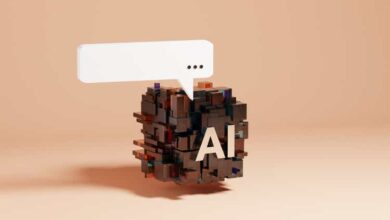AI shows capabilities, dangers when used in elections

Elections officials said they’ve taken steps to protect election security and address the rise of disinformation and artificial intelligence.
PHOENIX — “Consider the best and worst ways this technology can be used,” the image of Arizona Secretary of State Adrian Fontes said.
But it wasn’t really Fontes. At first glance, the video appears genuine. The image of Fontes has his mannerisms, his hand gestures, and definitely his voice. It even raises its eyebrows.
But on closer look, something is…off. The eyebrows raise at the wrong place. His voice, while matching Fontes’ voice, doesn’t rise above a certain level. His eyes never blink.
Fontes switches to German, then back to English, then French. But Fontes only speaks English and Spanish.
The video was generated by an artificial intelligence program that can churn out voice and video clones in minutes, where such videos used to take hours or even weeks. AI can make Fontes say anything, in any language, convincingly enough that it could fool a lot of people.
It could even make him say that an election has been postponed, ballot drop-off locations moved…or even that an election was stolen.
Fontes’ office made the AI video to demonstrate the capabilities and dangers of generative AI in elections.
Generative AI creates new content, rather than regurgitates existing content, like a chatbot does. Generative AI can produce photos, videos and audio from text prompts.
Thursday, the Secretary of State’s office hosted an exercise for members of the media designed to demonstrate the difficulties of hosting an election in the age of disinformation and artificial intelligence.
“We’re facing the kinds of threats that no one has ever seen before,” Fontes said. “It is unnerving to be where we’re at.”
Elections officials said they’ve taken steps to protect election security and address the rise of disinformation.
“It’s going to reach broader and deeper than we’ve ever seen,” Fontes said, “We’ve already seen it.”
AI technology has already been used to make political robocalls, generative AI has also been used to create fake videos of politicians saying things they’ve never said.
There are ways to identify AI-generated images and video, however.
- Details: Generative AI struggles with fine and repetitive details. Fingers and teeth can sometimes appear abnormal, or an image may have more or fewer fingers than a person should have. AI can also struggle to generate convincing ears and earlobes.
- Emotion: AI has trouble generating convincing emotions in voices, though it is getting better. Some AI startups are working on creating “empathic” AI models that can demonstrate convincing emotions.
- Audio: AI-generated audio is often very “clean”, meaning it has no ambient noise. If the audio sounds as if it was recorded in a very quiet studio, it may not be real. Also, AI audio typically does not take a breath.
- Reverse Search: You can try a reverse image search to check if the content has appeared anywhere else. If it hasn’t, you may want to be skeptical about it.
>> Download the 12News app for the latest local breaking news straight to your phone.
12News on YouTube
Catch up on the latest news and stories on the 12News YouTube channel. Subscribe today.



